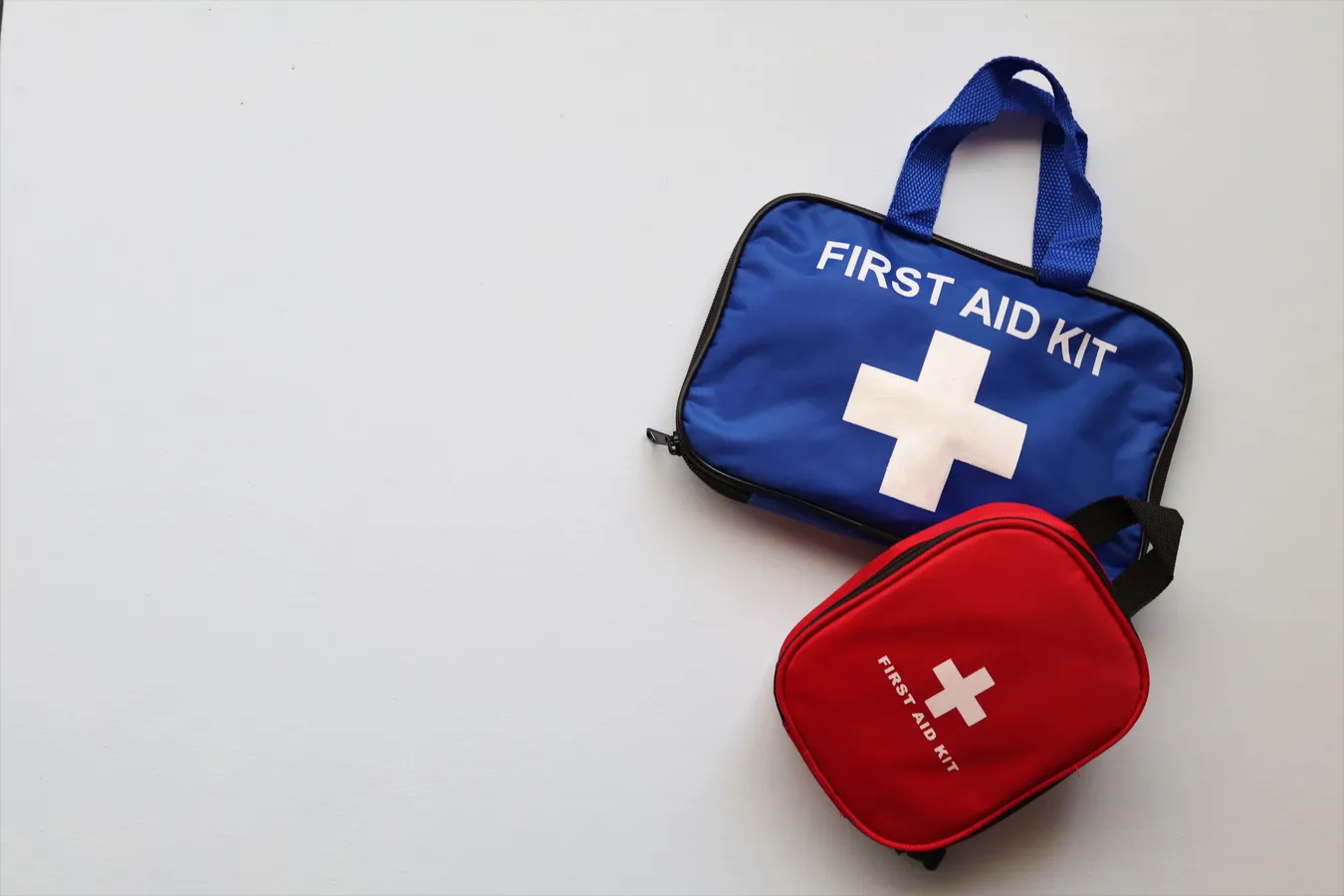Life-Saving Skills Everyone Should Know
6 minuteRead

In the event of a medical emergency, it's natural to assume that someone else will step up and assist the person in need. Unfortunately, this isn't always the case — and knowing how to respond to emergencies in a safe and effective manner can be critical to ensuring someone's survival. Of course, the following information should not be used in place of appropriate certifications, classes, or hands-on training. And, no matter what kind of emergency medical situation you're in, it's always a good idea to call your local emergency medical services. Here are some skills to become acquainted with so that you will be prepared to act in emergency medical situations.
Knowing how and when to call for emergency medical assistance is crucial, no matter how simple it may seem.
When responding to an emergency medical situation, it is critical that you contact your local emergency medical services (EMS) as soon as possible.
Furthermore, calling EMS usually results in far more than just dispatching paramedics to the scene of the incident. Many dispatchers, for example, are trained to give people over the phone instructions on how to perform CPR, administer life-saving drugs, and handle other emergencies. If you are unable to make the call yourself, yell out immediately to ensure that someone else does.
CPR performed correctly has the potential to save a person's life.
CPR (short for cardiopulmonary resuscitation) is a well-known emergency technique used to assist someone who has suffered a cardiac arrest, which is a potentially fatal condition in which the heart suddenly stops beating. Unfortunately, if a person does not receive immediate help, cardiac arrest can result in brain damage or even death within minutes.
Hands-on CPR involves manually compressing the chest to pump blood to vital organs even if the heart has stopped.
Contrary to popular belief, effective CPR does not necessitate mouth-to-mouth (rescue breaths), but rather prioritises consistent, repeated chest compressions.
There are procedures for performing chest compressions. It compresses at a rate of 100 to 120 compressions per minute. There are also depth guidelines — you should be compressing at least 2 inches into an adult's chest.
Recognizing the symptoms of a stroke can aid in the timely delivery of life-saving treatment.
The difficulty in identifying conditions like stroke is that the symptoms can be subtle and vary from person to person. Some common visible signs of a stroke include a droopy face on one side, difficulty speaking, difficulty seeing, sudden numbness or weakness of the face, and difficulty walking.
The acronym "FAST" (Face, Arms, Speech, and Time) can assist you in determining whether someone you know is suffering from a stroke and getting them the necessary care.
The "FAST" test requires you to look for droopiness in a person's face, raise both arms to see if one is lower than the other, and have them repeat a phrase for you to see if their speech is slurred or slow.
Using an AED may be able to help a person's heart before emergency services arrive.
An automated external defibrillator (AED) is a machine that delivers an electric shock to the heart in order to restore it to normal rhythm. AEDs are made up of two wired pads that are placed directly on a person's bare chest and a portable box that detects the rhythm of the heart.
Notably, before using an AED on someone, make sure they are unresponsive by checking for a lack of pulse. Of course, you should try to contact EMS first.
Fortunately, AEDs are ready to use right away and come with voice instructions that tell you exactly what to do.
Although certification is not required to use an AED, it is recommended that you seek training to help you feel more confident in using them.
The Heimlich manoeuvre is a useful technique for preventing someone from choking to death.
https://en.wikipedia.org/wiki/Abdominal_thrusts
The Heimlich manoeuvre is a well-known method for removing food or other foreign objects that have become lodged in a person's windpipe. If you notice someone choking and unable to speak, call 911 and perform the Heimlich manoeuvre on them. The inability to speak indicates that their windpipe is likely blocked and they are unable to breathe.
Other symptoms of choking include the universal distress signal (hands covering the throat), turning blue, and gasping for air.
Wrapping your arms around someone from behind and clasping your hands together is the Heimlich manoeuvre. Then you give the person multiple upward thrusts toward their belly button until the object comes out of their mouth.
Remember that this method is only for adults who are choking. For babies and children under a year old, try to dislodge the object by placing them face down and striking them five times between the shoulder blades with the heel of your hand. If this does not work, use chest thrusts.
Similarly, if someone has already passed out due to a lack of oxygen, you should immediately lie them on their back and tilt their head to open their airway. You should then begin CPR to keep their blood flowing until EMS arrives.
In any case, responding to a choking victim as soon as possible is critical. It only takes about four minutes without oxygen for the brain to begin to suffer damage or for the person to die.
With the right amount of pressure, you may be able to stop severe bleeding in many cases.
https://www.stjohn.org.nz/first-aid/first-aid-library/bleeding/
Anyone who has a serious cut or another traumatic injury that isn't stopping bleeding is at a higher risk of developing hypovolemic shock. This is a potentially fatal condition in which the heart is unable to pump enough blood through the body. The vast majority of wounds can be treated with direct pressure. Most people can generate sufficient pressure with just one hand or their body weight. This pressure should be applied firmly and continuously to aid in the cessation of the bleeding.
Additionally, if you can elevate the wound above the heart (for example, if someone's arm has been injured, lift it above their chest, closer to their head), that may be beneficial, but the most important factor in stopping the bleeding is maintaining constant pressure.
Even if you are successful in stopping the bleeding, the patient should seek medical attention for long-term treatment.
Understanding how to care for someone who is having a seizure can save their life or prevent them from choking.
https://jamaicahospital.org/newsletter/dos-and-donts-during-a-tonic-clonic-seizure/
It can be frightening to witness someone having a seizure, especially if the convulsions are violent. However, as a bystander, you should refrain from attempting to restrain them. You may injure yourself or the person having a seizure if you do so.
However, someone who is having a seizure is at a high risk of choking.
When a person is seizing, they are usually not breathing, and as a result, many of these patients become cyanotic (turn blue). It's critical to get someone on their side because if they vomit while lying back, they'll aspirate it into their lungs. Aspiration is the medical term for accidentally inhaling something into the windpipe, such as food or vomit.
Placing someone on their side makes it less likely that they'll inhale the foreign objects during the seizure.
The CDC also recommends placing a soft object, such as a jacket or pillow, under the person's head and removing any sharp or dangerous objects from the area around them.
The vast majority of seizures will stop on their own if no treatment is given. However, you should keep track of how long the seizure lasts so that you can later provide that information to medical personnel or the person experiencing the seizure.
Notably, the CDC claims that the majority of seizures do not necessitate medical attention. However, if the person seizing has never had seizures before, if they have difficulty breathing after the seizure, if they have multiple seizures in a short period of time, if the seizure lasts longer than 5 minutes, or if the person has injured themselves during the seizure, EMS should be called.
Write, Record and Answer! Consume Unlimited Content! All you need to do is sign in and its absolutely free!
Continue with one click!!By signing up, you agree to our Terms and Conditions and Privacy Policy.










